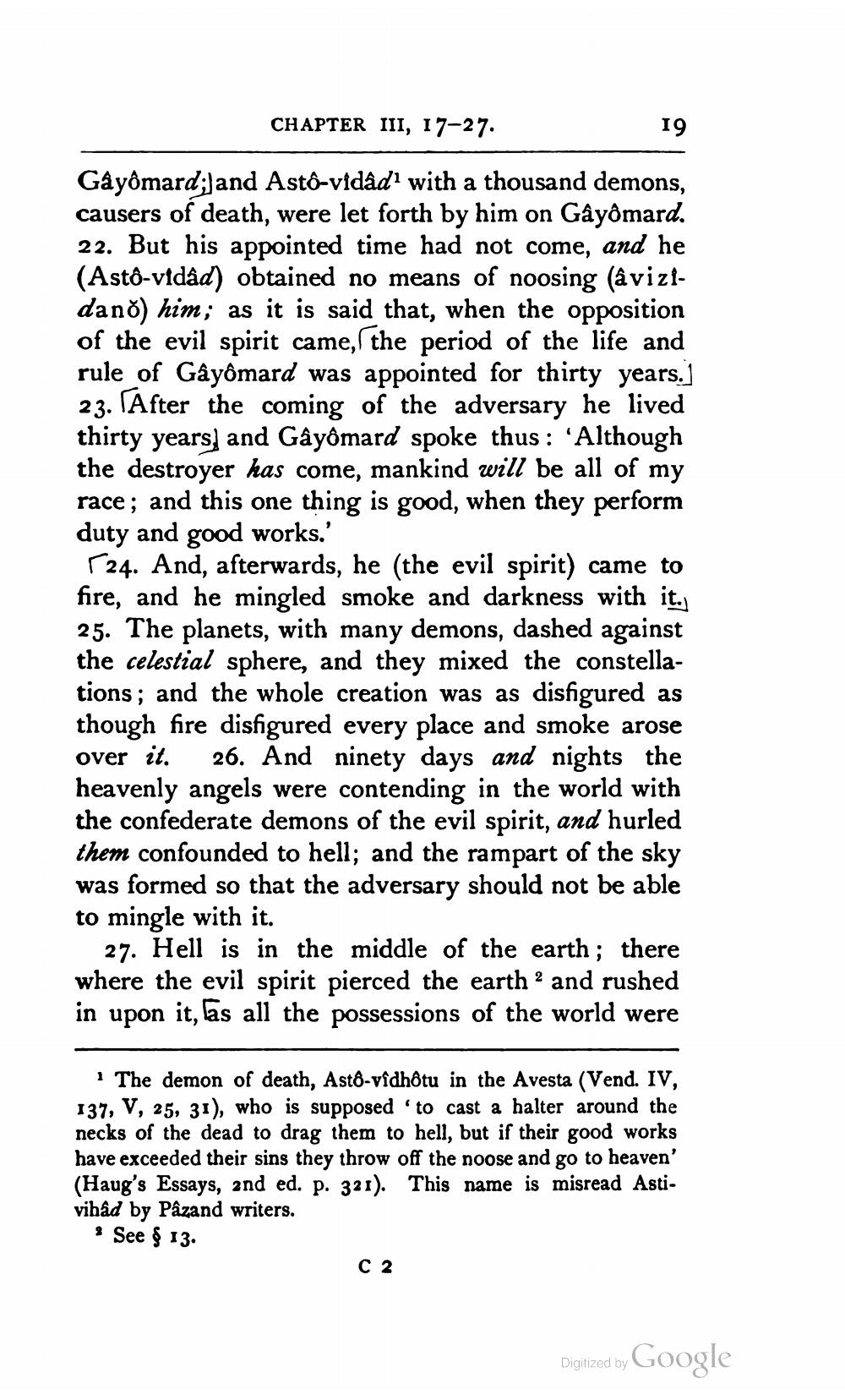________________
CHAPTER III, 17–27.
19
Gâyômard; and Astô-vidad1 with a thousand demons, causers of death, were let forth by him on Gâyðmard. 22. But his appointed time had not come, and he (Astô-vidad) obtained no means of noosing (âvizfdano) him; as it is said that, when the opposition of the evil spirit came, the period of the life and rule of Gâyômard was appointed for thirty years. 23. After the coming of the adversary he lived thirty years, and Gâyômard spoke thus : 'Although the destroyer has come, mankind will be all of my race; and this one thing is good, when they perform duty and good works.'
724. And, afterwards, he (the evil spirit) came to fire, and he mingled smoke and darkness with it. 25. The planets, with many demons, dashed against the celestial sphere, and they mixed the constellations; and the whole creation was as disfigured as though fire disfigured every place and smoke arose over it. 26. And ninety days and nights the heavenly angels were contending in the world with the confederate demons of the evil spirit, and hurled them confounded to hell; and the rampart of the sky was formed so that the adversary should not be able to mingle with it.
27. Hell is in the middle of the earth; there where the evil spirit pierced the earth 2 and rushed in upon it, as all the possessions of the world were
1 The demon of death, Asto-vidhôtu in the Avesta (Vend. IV, 137, V, 25, 31), who is supposed to cast a halter around the necks of the dead to drag them to hell, but if their good works have exceeded their sins they throw off the noose and go to heaven' (Haug's Essays, 2nd ed. p. 321). This name is misread Astivihad by Pâzand writers.
See § 13.
Digitized by
Digitized by Google




